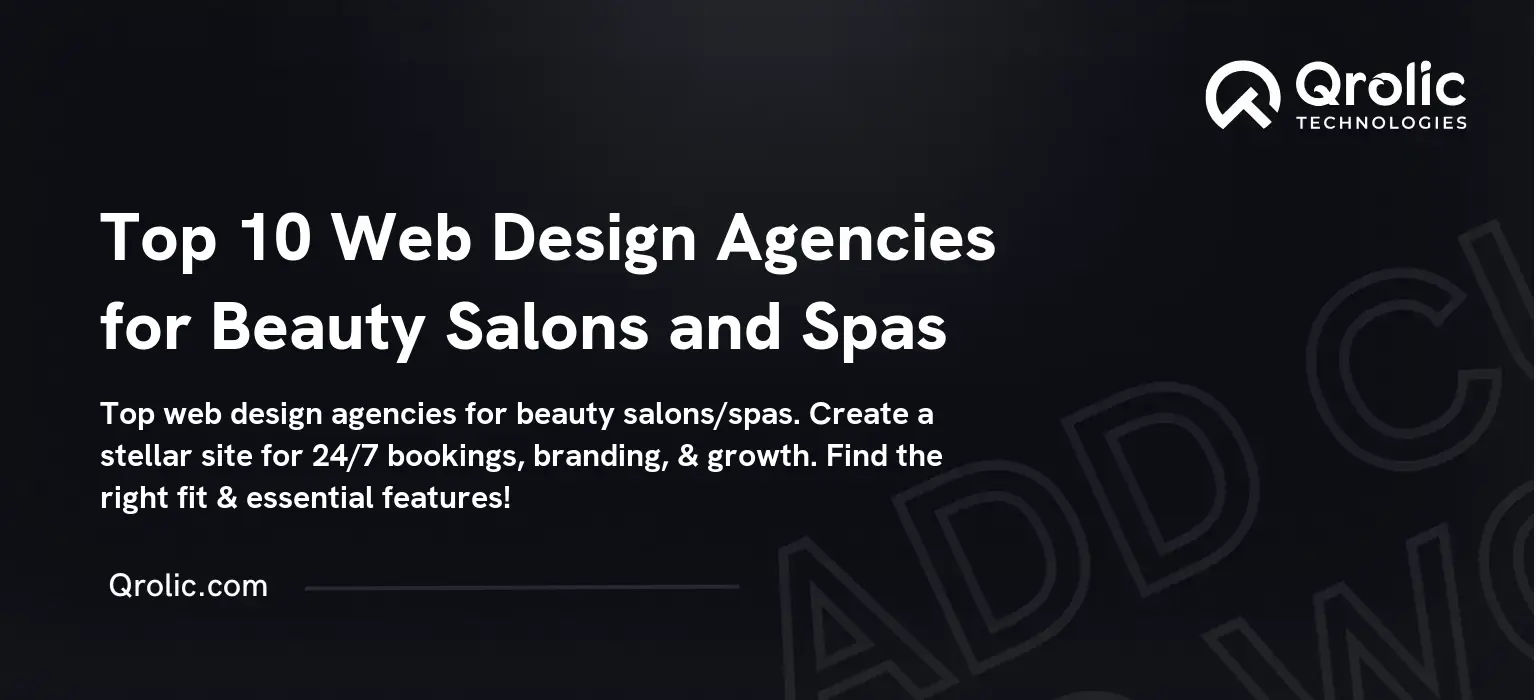The modern spa and salon experience extends far beyond the four walls of your physical location. In today’s digital landscape, your website is often the first (and sometimes only) impression you make on potential clients. A well-designed, user-friendly website isn’t just an online brochure; it’s a powerful tool for attracting new customers, boosting brand loyalty, and driving revenue growth. This comprehensive guide dives deep into the intricacies of spa website development, salon web design, and beauty service website design, providing you with actionable insights to create a site that truly reflects the quality and value of your offerings.
Quick Summary:
- Your website is vital for attracting clients and building trust.
- Include online booking, great visuals, and clear services.
- Optimize your site for search engines and mobile phones.
- Use social media and track performance for growth.
Table of Contents
- I. The Vital Importance of a Stellar Website for Spas and Salons
- A. First Impressions Matter: Establishing Credibility and Trust
- B. Attracting New Clients: Expanding Your Reach and Visibility
- C. Enhancing the Client Experience: Building Loyalty and Repeat Business
- D. Showcasing Your Brand Identity: Communicating Your Unique Style and Values
- II. Essential Elements of a High-Converting Spa and Salon Website
- A. Homepage: The Virtual Reception Desk
- B. Services Page: Detailed Information and Enticing Descriptions
- C. About Us Page: Building Trust and Connection
- D. Contact Page: Making it Easy to Connect
- E. Online Booking System: Streamlining the Appointment Process
- F. Blog: Engaging Content and SEO Power
- G. Gallery: Showcasing Your Work and Ambiance
- III. Optimizing Your Website for Search Engines (SEO)
- A. Keyword Research: Identifying Your Target Audience’s Search Terms
- B. On-Page Optimization: Fine-Tuning Your Website’s Content and Structure
- C. Off-Page Optimization: Building Authority and Backlinks
- D. Local SEO: Targeting Clients in Your Area
- IV. Integrating Social Media for Increased Engagement and Visibility
- A. Choosing the Right Platforms: Identifying Your Target Audience’s Preferences
- B. Content Strategy: Creating Engaging and Shareable Content
- C. Social Media Advertising: Reaching a Wider Audience
- D. Integrating Social Media with Your Website
- V. Measuring Website Performance and Making Data-Driven Decisions
- A. Google Analytics: Tracking Website Traffic and User Behavior
- B. A/B Testing: Experimenting with Different Website Elements
- C. Heatmaps: Visualizing User Interaction
- D. Using Data to Improve Your Website
- VI. Qrolic Technologies: Your Partner in Digital Transformation
- VII. Common Mistakes to Avoid in Spa and Salon Website Development
- A. Neglecting Mobile Optimization
- B. Poor Quality Images
- C. Complicated Navigation
- D. Lack of Call to Actions
- E. Ignoring SEO
- F. Stale Content
- G. Slow Loading Speed
- VIII. Future Trends in Spa and Salon Website Design
- A. Artificial Intelligence (AI) and Chatbots
- B. Virtual Reality (VR) and Augmented Reality (AR)
- C. Personalization
- D. Voice Search Optimization
- E. Sustainable and Ethical Design
I. The Vital Importance of a Stellar Website for Spas and Salons
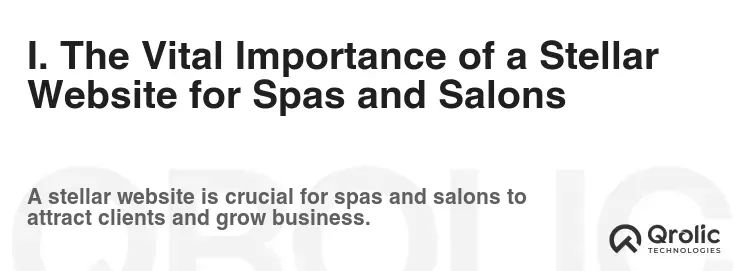
In a world saturated with digital noise, a generic website simply won’t cut it. Your website needs to be a curated experience, reflecting the tranquility, luxury, and expertise your spa or salon provides. Here’s why investing in professional spa website development and salon web design is paramount:
A. First Impressions Matter: Establishing Credibility and Trust
- Visually Appealing Design: Within seconds, visitors will judge your business based on your website’s aesthetic. A clean, modern design with high-quality images instantly conveys professionalism and attention to detail, signaling that your services are worth the investment. Think about using high-resolution photos that convey a sense of peace, relaxation, and luxury.
- Clear Value Proposition: Your website should immediately communicate what makes your spa or salon unique. Highlight your specializations, certifications, awards, and any unique experiences you offer. What problem do you solve for your clients? Make it immediately obvious.
- Social Proof: Incorporate testimonials, reviews, and case studies prominently on your website. Positive feedback from satisfied clients builds trust and encourages new visitors to book appointments. Consider embedding reviews directly from platforms like Google, Yelp, and Facebook.
B. Attracting New Clients: Expanding Your Reach and Visibility
- Search Engine Optimization (SEO): A properly optimized website ensures your business appears prominently in search engine results when potential clients search for services like “massage therapy near me,” “best hair salon in [city],” or “facial treatments.” (More on SEO later!). Focusing on local SEO is especially crucial.
- Targeted Content Marketing: Create informative and engaging blog posts, articles, and videos related to beauty, wellness, and your specific services. This not only attracts visitors but also establishes you as an authority in your field. Think topics like “The Benefits of Regular Facials,” “Hair Color Trends for [Year],” or “How to Choose the Right Massage Therapist.”
- Online Booking and Appointment Scheduling: Streamline the booking process with a user-friendly online scheduling system. This eliminates phone tag and allows clients to book appointments at their convenience, 24/7.
C. Enhancing the Client Experience: Building Loyalty and Repeat Business
- Detailed Service Descriptions: Provide comprehensive descriptions of each service, including pricing, duration, and benefits. Use high-quality images or videos to showcase the experience.
- Easy Navigation: Ensure your website is easy to navigate, allowing visitors to quickly find the information they need. A clear menu structure and intuitive layout are essential.
- Personalized Recommendations: Implement features that suggest services or products based on client preferences and past bookings. This creates a more personalized and engaging experience.
- Membership Programs and Loyalty Rewards: Promote your membership programs and loyalty rewards on your website to incentivize repeat business and build a strong customer base.
D. Showcasing Your Brand Identity: Communicating Your Unique Style and Values
- Consistent Branding: Your website should seamlessly reflect your brand’s visual identity, including your logo, color palette, fonts, and overall aesthetic. Consistency across all platforms reinforces brand recognition and builds trust.
- Tell Your Story: Share your brand’s story, mission, and values on your website. Connect with potential clients on an emotional level and let them know what sets you apart.
- Highlight Your Team: Introduce your team members with photos and brief biographies. Showcase their expertise and create a more personal connection with visitors.
II. Essential Elements of a High-Converting Spa and Salon Website
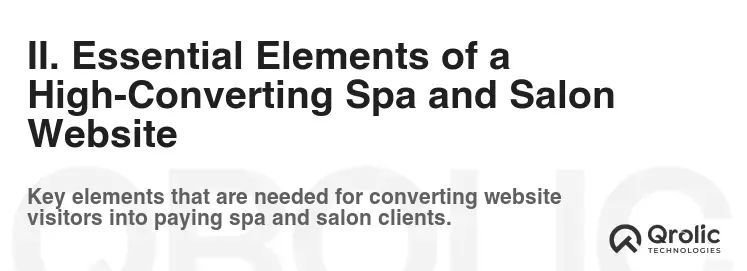
A successful beauty service website design incorporates several key elements that work together to attract, engage, and convert visitors into paying clients.
A. Homepage: The Virtual Reception Desk
- Compelling Headline: Grab visitors’ attention immediately with a clear and concise headline that highlights your unique value proposition.
- High-Quality Visuals: Use stunning images or videos that showcase your spa or salon’s ambiance and services.
- Clear Call to Action (CTA): Guide visitors towards the next step, such as “Book Now,” “Schedule a Consultation,” or “View Our Services.”
- Easy Navigation: Ensure the homepage provides easy access to all essential sections of your website.
- Mobile Responsiveness: The homepage must be fully responsive and optimized for viewing on all devices, especially mobile phones.
B. Services Page: Detailed Information and Enticing Descriptions
- Comprehensive Service Listings: List all your services with detailed descriptions, pricing, and duration.
- High-Quality Images/Videos: Use visuals to showcase the experience and benefits of each service.
- Service Packages: Offer bundled services at a discounted price to incentivize clients to try multiple treatments.
- Online Booking Integration: Allow clients to book specific services directly from the services page.
- Benefits-Oriented Language: Focus on the benefits of each service, rather than just the technical details.
C. About Us Page: Building Trust and Connection
- Brand Story: Share your brand’s story, mission, and values.
- Team Biographies: Introduce your team members with photos and brief biographies.
- Credentials and Certifications: Highlight your team’s expertise and certifications.
- Testimonials and Reviews: Incorporate positive feedback from satisfied clients.
- Awards and Recognition: Showcase any awards or recognition you have received.
D. Contact Page: Making it Easy to Connect
- Contact Information: Provide your phone number, email address, and physical address.
- Google Maps Integration: Embed a Google Maps to help clients find your location.
- Contact Form: Allow visitors to easily submit inquiries through a contact form.
- Social Media Links: Include links to your social media profiles.
- Business Hours: Clearly display your business hours.
E. Online Booking System: Streamlining the Appointment Process
- User-Friendly Interface: The booking system should be easy to navigate and understand.
- Real-Time Availability: Display real-time availability of services and staff.
- Appointment Reminders: Send automated appointment reminders via email or SMS.
- Payment Processing: Integrate secure payment processing for online bookings.
- Customizable Options: Allow clients to customize their appointments with add-ons and preferences.
F. Blog: Engaging Content and SEO Power
- Informative Articles: Publish articles on topics related to beauty, wellness, and your specific services.
- Engaging Content: Create content that is both informative and engaging, using visuals and storytelling.
- SEO Optimization: Optimize your blog posts for relevant keywords to attract search engine traffic.
- Call to Action: Include a call to action at the end of each blog post, such as “Book an Appointment” or “Subscribe to Our Newsletter.”
- Consistent Posting Schedule: Maintain a consistent posting schedule to keep your audience engaged and attract new visitors.
G. Gallery: Showcasing Your Work and Ambiance
- High-Quality Photos: Use high-quality photos to showcase your salon or spa’s ambiance, services, and team.
- Before and After Photos: Showcase before and after photos of your services to demonstrate the results you can achieve.
- Portfolio of Work: Create a portfolio of your best work, including hairstyles, makeup looks, and other services.
- Categorized Photos: Organize your photos into categories to make it easy for visitors to find what they are looking for.
- Mobile Optimization: Ensure your gallery is optimized for viewing on mobile devices.
III. Optimizing Your Website for Search Engines (SEO)
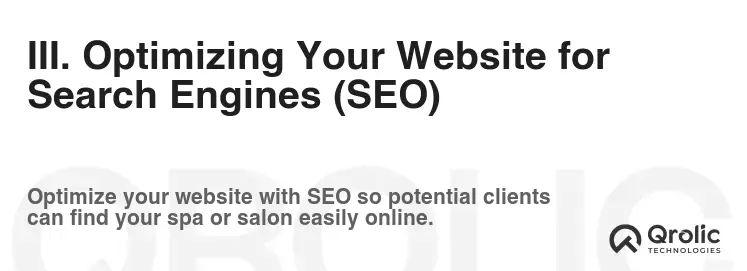
Effective spa website development hinges on strong SEO. A visually stunning website is useless if potential clients can’t find it on Google. Here’s a breakdown of essential SEO strategies:
A. Keyword Research: Identifying Your Target Audience’s Search Terms
- Brainstorming: Start by brainstorming a list of relevant keywords related to your services and location. Consider terms like “massage therapy,” “hair salon,” “facial treatments,” “pedicures,” and your city or neighborhood.
- Keyword Research Tools: Use keyword research tools like Google Keyword Planner, Ahrefs, SEMrush, and Moz Keyword Explorer to identify high-volume, low-competition keywords.
- Long-Tail Keywords: Focus on long-tail keywords, which are longer, more specific phrases that target a niche audience. For example, “best deep tissue massage in downtown [city]” or “organic facial treatments for sensitive skin.”
- Competitor Analysis: Analyze your competitors’ websites to identify the keywords they are targeting.
B. On-Page Optimization: Fine-Tuning Your Website’s Content and Structure
- Title Tags: Optimize your title tags for each page of your website, including relevant keywords. Title tags are the clickable headlines that appear in search engine results.
- Meta Descriptions: Write compelling meta descriptions that accurately summarize the content of each page and entice users to click through from search engine results.
- Header Tags (H1-H6): Use header tags to structure your content and highlight important keywords. Use H1 for the main headline of each page and H2-H6 for subheadings.
- Content Optimization: Incorporate relevant keywords naturally throughout your website’s content. Avoid keyword stuffing, which can harm your search engine rankings.
- Image Optimization: Optimize your images by using descriptive file names and alt tags. Alt tags are text descriptions that are displayed when an image cannot be loaded.
- Internal Linking: Link to other relevant pages on your website to improve navigation and search engine crawlability.
- Mobile-Friendliness: Ensure your website is fully responsive and optimized for viewing on mobile devices. Google prioritizes mobile-friendly websites in its search results.
- Page Speed: Optimize your website’s loading speed by compressing images, minimizing code, and using a content delivery network (CDN).
C. Off-Page Optimization: Building Authority and Backlinks
- Link Building: Earn backlinks from other reputable websites in your industry. Backlinks are links from other websites to your website.
- Local Citations: List your business in online directories and citation websites, such as Yelp, Google My Business, and Yellow Pages.
- Social Media Marketing: Promote your website and content on social media platforms to increase brand awareness and drive traffic.
- Guest Blogging: Write guest posts for other websites in your industry to reach a wider audience and earn backlinks.
- Online Reviews: Encourage clients to leave positive reviews on online review platforms, such as Google, Yelp, and Facebook.
D. Local SEO: Targeting Clients in Your Area
- Google My Business: Claim and optimize your Google My Business listing. This is a free listing that appears in Google Maps and local search results.
- NAP Consistency: Ensure your business name, address, and phone number (NAP) are consistent across all online platforms.
- Local Keywords: Target local keywords in your website content and meta tags.
- Local Citations: List your business in local online directories and citation websites.
- Reviews: Encourage clients to leave reviews on your Google My Business listing.
IV. Integrating Social Media for Increased Engagement and Visibility
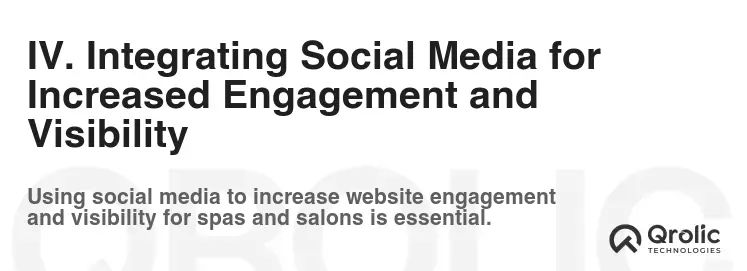
Social media is an indispensable tool for promoting your spa or salon and engaging with potential and existing clients. A cohesive strategy intertwined with your salon web design efforts can yield significant results.
A. Choosing the Right Platforms: Identifying Your Target Audience’s Preferences
- Instagram: Ideal for showcasing visually appealing content, such as hairstyles, makeup looks, and spa ambiance.
- Facebook: Effective for building community, sharing updates, and running targeted advertising campaigns.
- Pinterest: A great platform for sharing inspiration and ideas related to beauty, wellness, and home decor.
- TikTok: A growing platform for creating short-form video content that can reach a younger audience.
B. Content Strategy: Creating Engaging and Shareable Content
- Behind-the-Scenes Content: Share behind-the-scenes glimpses of your spa or salon, showcasing your team, services, and ambiance.
- Client Testimonials: Share testimonials from satisfied clients.
- Before and After Photos: Showcase before and after photos of your services.
- Educational Content: Share tips and advice related to beauty, wellness, and self-care.
- Interactive Content: Run polls, quizzes, and contests to engage your audience.
C. Social Media Advertising: Reaching a Wider Audience
- Targeted Advertising: Use social media advertising platforms to target potential clients based on their interests, demographics, and location.
- Retargeting: Retarget website visitors who have shown interest in your services.
- Lead Generation Ads: Use lead generation ads to collect contact information from potential clients.
D. Integrating Social Media with Your Website
- Social Media Sharing Buttons: Add social media sharing buttons to your website to make it easy for visitors to share your content.
- Social Media Feeds: Embed social media feeds on your website to showcase your latest posts.
- Click-to-Call Buttons: Add click-to-call buttons to your social media profiles to make it easy for potential clients to contact you.
V. Measuring Website Performance and Making Data-Driven Decisions
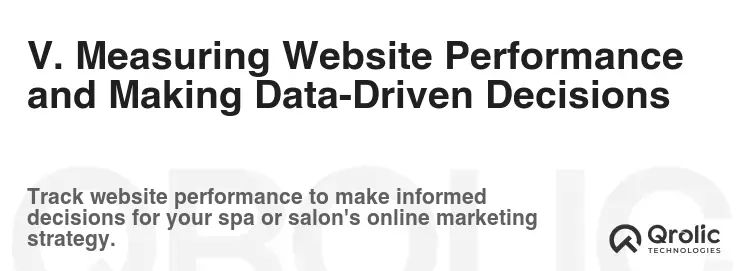
Website development is an ongoing process. Regularly monitoring your website’s performance and making data-driven decisions is crucial for continuous improvement.
A. Google Analytics: Tracking Website Traffic and User Behavior
- Website Traffic: Track the number of visitors to your website, the sources of traffic, and the pages they visit.
- Bounce Rate: Monitor your website’s bounce rate, which is the percentage of visitors who leave your website after viewing only one page.
- Conversion Rate: Track your website’s conversion rate, which is the percentage of visitors who complete a desired action, such as booking an appointment or submitting a contact form.
- User Behavior: Analyze user behavior on your website to identify areas for improvement.
B. A/B Testing: Experimenting with Different Website Elements
- Headline Testing: Test different headlines to see which ones generate the most clicks.
- Call to Action Testing: Test different call to actions to see which ones generate the most conversions.
- Layout Testing: Test different website layouts to see which ones are the most user-friendly.
C. Heatmaps: Visualizing User Interaction
- Click Tracking: Track where users are clicking on your website.
- Scroll Tracking: Track how far users are scrolling down your pages.
- Attention Tracking: Track where users are focusing their attention on your website.
D. Using Data to Improve Your Website
- Identify Problem Areas: Use website analytics to identify areas where your website is underperforming.
- Make Data-Driven Changes: Make changes to your website based on data, rather than gut feeling.
- Continuously Monitor and Optimize: Continuously monitor your website’s performance and make adjustments as needed.
VI. Qrolic Technologies: Your Partner in Digital Transformation

At Qrolic Technologies (https://qrolic.com/), we understand the unique needs of spas and salons in the digital age. We are a full-service digital marketing agency specializing in spa website development, salon web design, and beauty service website design. Our team of experienced designers, developers, and marketers work collaboratively to create websites that are not only visually stunning but also highly effective at attracting new clients and driving revenue growth.
Here’s how Qrolic Technologies can help your spa or salon thrive online:
- Custom Website Design: We create custom websites that reflect your brand’s unique identity and cater to your specific target audience.
- Responsive Design: We ensure your website is fully responsive and optimized for viewing on all devices, including mobile phones, tablets, and desktops.
- SEO Optimization: We optimize your website for search engines to ensure your business appears prominently in search results.
- Social Media Integration: We integrate your website with social media platforms to increase brand awareness and engagement.
- Online Booking System: We integrate a user-friendly online booking system to streamline the appointment process.
- Content Marketing: We create engaging and informative content that attracts visitors and establishes you as an authority in your field.
- Digital Marketing Strategy: We develop a comprehensive digital marketing strategy to help you reach your target audience and achieve your business goals.
Why Choose Qrolic Technologies?
- Experience: We have a proven track record of success in helping spas and salons grow their businesses online.
- Expertise: Our team comprises highly skilled designers, developers, and marketers with expertise in the beauty and wellness industry.
- Customer Service: We provide exceptional customer service and support to ensure your satisfaction.
- Results-Driven Approach: We are committed to delivering measurable results that help you achieve your business goals.
- Affordable Pricing: We offer competitive pricing plans to fit your budget.
Partner with Qrolic Technologies and let us help you create a website that transforms your online presence and drives real results for your spa or salon.
VII. Common Mistakes to Avoid in Spa and Salon Website Development
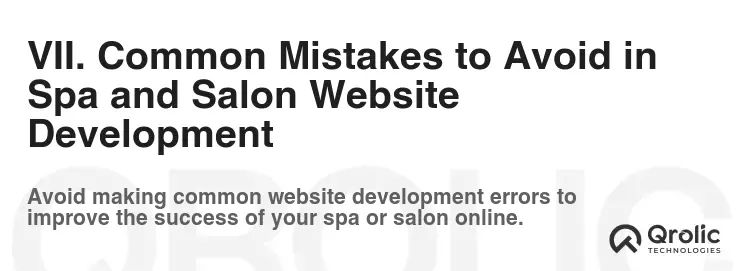
Even with the best intentions, several common mistakes can derail your beauty service website design efforts. Avoiding these pitfalls is crucial for a successful online presence.
A. Neglecting Mobile Optimization
In today’s mobile-first world, a website that isn’t optimized for mobile devices is essentially invisible to a large segment of your potential clientele. Ensure your website is fully responsive and provides a seamless user experience on all devices.
B. Poor Quality Images
Low-resolution or poorly composed images can undermine the entire aesthetic of your website. Invest in high-quality photography or videography that showcases your spa or salon in the best possible light.
C. Complicated Navigation
A confusing or cluttered website navigation can frustrate visitors and drive them away. Keep your navigation simple, intuitive, and easy to use.
D. Lack of Call to Actions
Without clear calls to action, visitors may not know what to do next. Guide them towards booking an appointment, contacting you, or exploring your services.
E. Ignoring SEO
Failing to optimize your website for search engines is like opening a business in a hidden location. Implement a comprehensive SEO strategy to ensure your website is visible to potential clients searching for your services online.
F. Stale Content
An outdated website with stale content sends the message that your business is not active or engaged. Regularly update your website with fresh content, promotions, and news.
G. Slow Loading Speed
A slow-loading website can frustrate visitors and negatively impact your search engine rankings. Optimize your website for speed by compressing images, minimizing code, and using a CDN.
VIII. Future Trends in Spa and Salon Website Design

The digital landscape is constantly evolving, and staying ahead of the curve is essential for maintaining a competitive edge. Here are some future trends to watch in spa website development and salon web design:
A. Artificial Intelligence (AI) and Chatbots
AI-powered chatbots can provide instant customer support, answer questions, and even book appointments, enhancing the user experience and freeing up your staff.
B. Virtual Reality (VR) and Augmented Reality (AR)
VR and AR technologies can offer immersive experiences, such as virtual tours of your spa or salon or virtual try-on tools for makeup and hairstyles.
C. Personalization
Personalized website experiences can cater to individual user preferences and needs, creating a more engaging and relevant experience.
D. Voice Search Optimization
As voice search becomes increasingly popular, optimizing your website for voice search is crucial for attracting new clients.
E. Sustainable and Ethical Design
Consumers are increasingly interested in supporting businesses that are committed to sustainability and ethical practices. Showcase your commitment to these values on your website.
By embracing these trends and continuously adapting your website to meet the evolving needs of your target audience, you can ensure your spa or salon remains a leader in the digital landscape.
By implementing the strategies and insights outlined in this comprehensive guide, you can create a website that not only attracts new clients but also enhances the overall client experience and drives sustainable growth for your spa or salon. Remember, your website is a powerful tool – use it wisely!


